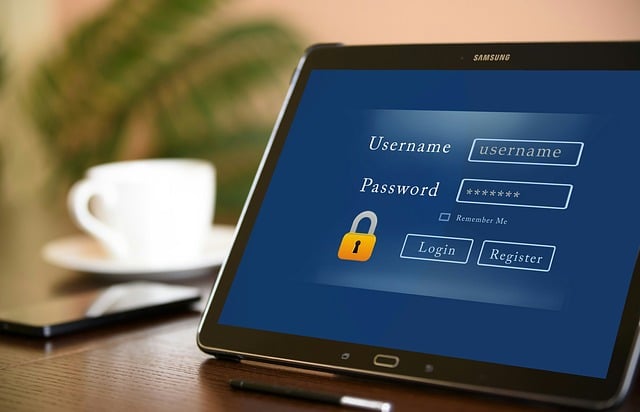 Whether you live near a body of water or not, flood insurance might be a good investment. It’s usually not included in your regular homeowners or renters insurance policy, though. Consider five factors as you decide if you need this type of insurance coverage.
Whether you live near a body of water or not, flood insurance might be a good investment. It’s usually not included in your regular homeowners or renters insurance policy, though. Consider five factors as you decide if you need this type of insurance coverage.
- Do you live in an area with a high flood risk? If so, you definitely want flood insurance coverage. That’s because your home, located near a river, stream, lake or flash-flood zone, faces a high threat of flooding. Protect your home and its contents when you buy a flood insurance policy.
- Do you live in a low flood risk zone? Consider that the local sewer system or nearby storm drain could overflow and cause extensive damage. Because a flood insurance policy typically costs less for customers who live in low-risk areas, purchasing a policy makes sense even if you don’t live near a major body of water or in a flood zone.
- Do you rent your home? Most landlord insurance policies cover the buildings only. They do not insure your home’s contents. Consider flood insurance that replaces any possessions that are damaged by flooding.
- Do you have a mortgage? Check with your lender about flood insurance requirements. If you live in a flood zone, you will probably need to carry this coverage and prove that you’ve purchased a policy before you can sign the loan documents.
- Do you own any possessions? In just a few inches of water, your appliances, furniture and other belongings can be damaged beyond repair. So, if you own any possessions, consider flood insurance that provides financial reimbursement and allows you to replace items that are damaged by excessive water.
Before discounting flood insurance, talk to your insurance agent. He or she will answer your questions and help you decide if coverage is a wise investment for you. In many cases, the coverage is invaluable.
Read more
Have a safe and wonderful Memorial Day weekend!
 The U.S. Department of Justice’s Bureau of Justice Statistics reports that most burglaries occur during the summer months (and while people are away). While some burglars enter your home, others are interested in soft targets, the items stored outside of your home. One in three homeowners do not protect their soft targets, but you can with these tips.
The U.S. Department of Justice’s Bureau of Justice Statistics reports that most burglaries occur during the summer months (and while people are away). While some burglars enter your home, others are interested in soft targets, the items stored outside of your home. One in three homeowners do not protect their soft targets, but you can with these tips.
-
- Vacant Properties
Thieves and vandals typically target vacant homes as they steal scrap metal or take other items to sell. If you’re on vacation, keep your windows and doors locked. Install outdoor motion activated lights and use a timer to turn on indoor lights at random times, too. You can also install a video camera that allows you to monitor your home while you’re away.
- Vehicles and Loose Items
Experienced car thieves can steal a vehicle in less than 10 seconds. Always keep your car locked inside the garage or make sure the alarm is turned on and install an anti-theft device that disables the ignition or locks the steering wheel. You should hide any loose items, too, including electronics, garage door openers, toll booth passes and parking garage passes, either in the glove box or trunk.
- Unlocked Sheds and Garages
Tools and lawn equipment are easy to resell. Always lock your garage, including windows, even if you’re working in your lawn. Be sure your valuable tools and equipment are stored inside the shed or garage, too.
- Sports Equipment
Whether your summer activities include baseball, kayaking or tennis, resist the urge to store your sports equipment outside. Secure it safely in a locked garage or shed, in a locked bin or in your vehicle’s trunk.
- Bicycles
Ideally, you should store your bike in a locked garage or shed. If you have to store your bikes, don’t use thin bike chains and wheel locks that are easy to unbolt or cut. A heavy chain threaded through the bike’s wheels and frame and a thick padlock are more secure.
- Air Conditioning Units
Your outdoor air conditioning units contain copper coils and other metal piping that thieves can scrap for cash. Install a bright security light that’s motion activated near your outdoor AC unit or install a locked fence around it.
- Pool Pumps
Pool pumps are easy to resell. Remove the pool pump and store it inside during your vacation. If that’s not possible, install a bright, motion-activated security light near the pump. You should also install a fence around your pool and keep it locked at all times.
Protect your home from thieves when you take steps to protect these seven soft targets. Be sure your homeowners or renters insurance policies are up to date, too, as you protect your home and possessions.
Read more
 Although you might not be aware of it, there are far-reaching benefits to positive thinking that can improve your health and help you with stress management. According to the Mayo Clinic, studies show that the personality traits of optimism and pessimism can have a direct impact on your well-being.
Although you might not be aware of it, there are far-reaching benefits to positive thinking that can improve your health and help you with stress management. According to the Mayo Clinic, studies show that the personality traits of optimism and pessimism can have a direct impact on your well-being.
The good news is that, even if you are a pessimist by nature, you can take steps to improve positive thinking techniques in your life, and reap the resulting health and well-being benefits. Health Benefits of Positive Thinking. Over time, researchers have explored the effects of optimistic thinking on health, and have found many correlations between well being and positive thought processes. These include:
- Longer life span
- Better resistance to the common cold
- Lower rates of depression
- Reduced rates of cardiovascular disease
- Improved coping skills during times of stress and hardship
- Better physical and psychological well-being
Get on the Road to Positive Thought Processes.
There are some simple steps to take to move away from negative thinking, and create a new habit of positive self-talk. Monitor yourself: During the day, stop and take note of your thoughts. If thoughts are mainly negative, make a conscious effort to put a positive spin on things.
Be open to good humor: Give yourself permission to be happy, to smile, and to laugh, even when the chips are down. Seek humor in everyday events.
Lead a healthy lifestyle: Follow a healthy diet and exercise at least three times per week. Eating right and exercising both have positive effects on mood and stress management.
Surround yourself with people who focus on the positive: Choose to spend time with family and friends who are cheerful, supportive, and offer helpful feedback. Avoid spending time with negative people who have a “glass half empty” attitude.
Practice positive self talk: Be gentle and encouraging with yourself, and never tell yourself something that you would not say to another person. If a negative thought enters your mind, try to think about it rationally, and follow up with positive affirmations about yourself and your circumstances.
Practice Every Day!
If you have had a past tendency to have a negative outlook on life, don’t despair. While you may not become an optimist overnight, with everyday practice, you will begin to replace negativity with productive, positive thoughts.
You may find that you become, not only less critical of yourself, but more accepting of the world around you. As your general attitude improves, you will begin to reap the physical and emotional benefits of a positive outlook on life!
Read more

When it comes to workplace safety, especially in big cities, have you thought about the company parking lot or garage? Your co-workers use it at least twice a day to stow and shelter their vehicles, but beyond that it’s fairly invisible. A closer look reveals that predators might easily be lurking there. 
To minimize this threat, experts recommend ensuring that workers (as well as visitors) take these precautions:
- Stay alert for cruising vehicles, whose drivers can stop suddenly and jump out to rob or assault you.
- If you’re using a parking lot, park near the building in a visible, lighted area.
- In a parking garage, park near the parking attendant (if there is one) or near a well-lit exit. Women should avoid using stairs and elevators, if possible.
- Use the main exit/entrance rather than a side or secluded one.
- Lock any valuables (including GPS, shopping, other bags, etc.) out of sight. If you’re walking to your vehicle after hours, ask a co-worker or security officer to accompany you.
- If you have to walk alone, ask someone to watch from inside, if possible. Turn around frequently to make sure you’re not being followed and pretend that you’re waving to someone ahead to give the impression you’re not alone.
- Don’t talk on your cellphone or listen to music with ear pods — predators are looking for victims who seem distracted or unaware.
- Have your car keys and personal alarm or whistle ready as you approach your vehicle.
- If someone nearby looks suspicious, keep walking and get to a safe place where you can call for help.
- Before you unlock the door, take a good look around, inside, and behind the vehicle.
- Once you enter the vehicle, lock all doors promptly and keep your windows up until you’ve exited the lot or garage.
Be safe.
Read more

The craftsman’s motto, “measure twice, cut once” is a sort of microcosm of everything you need to know in order to bring projects in on time and under budget. Cutting corners, taking shortcuts, neglecting necessary expenses, that might help you save time and money in the short run, but best case scenario, it’s going to wind up costing you more in labor and budget to redo it later on. Worst case scenario, you build a faulty home that collapses in the first year, if it manages to pass inspection in the first place, and then nobody ever hires you again.
The first thing to go when people take shortcuts tends to be safety. A rush job makes for an unsafe work environment, and results in an unsafe living environment. No matter how much time and money you save on the job, it’s no good if you wind up paying it back in legal fees and time spent in the court room.
So how do you save time and money without taking dangerous shortcuts?
Be Pragmatic When Buying Tools And Materials
Simply put: there’s not much that a $200 hammer can do that a $10 hammer cannot. Don’t cut costs on quality, but shop around, and don’t overspend on fancy tools and materials that you don’t need.
Overestimate All Costs
If you promise your client that you’ll have the addition done in a week, and then a nasty thunderstorm hits on day seven, you’re going to wind up trying to finish up the roof in the middle of a heavy downpour. Promise a two week turnaround on the same project, and the client will be delighted to see the project finished six days early. Don’t make “best case scenario” promises. As they say, plan for the worst, hope for the best.
Pay A Little More For Experience When You Need To
A $12-a-hour lackey might be able to install a kitchen sink if you give him the whole weekend to do it. A $30-an-hour professional plumber might be able to get the same sink installed in an afternoon. Saving money often means spending a little more now so you can spend considerably less in the long run.
Don’t Over-commit Yourself
You’re going to burn through a lot of gas and a lot of daylight if you’re running three jobs at a time and driving all over town to get to them. If client #2 can’t wait a few days for you to finish up a job for client #1, they’re probably a pain in the neck to do business with anyways.
It all comes down to common sense, really: Pace yourself, set realistic goals, spend wisely, and always put safety first.
Read more

As technology becomes increasingly important for successful business operations, the value of a strong cyber liability insurance policy continues to grow. The continued rise in the amount of information stored and transferred electronically has resulted in a remarkable increase in the potential exposures facing businesses.
In an age where a stolen laptop or data breach can instantly compromise the personal data of thousands of customers, protecting your business from cyber liability is just as important as some of the more traditional exposures businesses account for in their commercial general liability policies.
Claims Scenario: Outsourcing Gone Wrong
The company: A national construction company that outsources some of its cyber security protections
The challenge: A construction firm partnered with a third-party cloud service provider in order to store customer information. While this service helped the company save on server costs, the third-party firm suffered a data breach.
As a result, the construction firm had to notify 10,000 of its customers and was forced to pay nearly $200,000 in incident investigation costs. The incident was made worse by the fact that the firm did not have a document retention procedure, which complicated the incident response process.
Cyber liability insurance in action: Following a data breach or other cyber event, the right policy can help organizations recoup a number of key costs. Specifically, cyber liability policies often cover investigation and forensics expenses—expenses that can easily bankrupt smaller firms who forgo coverage.
What’s more, when third parties are involved, managing litigation concerns can be a challenge. By using cyber liability insurance, organizations have access to legal professionals well-versed in cyber lawsuits and response.
Claims Scenario: Pardon the Interruption
The company: An online retail store that relies heavily on e-commerce
The challenge: A small-sized, online retailer partnered with a data centre to host its website and store its data. This is not uncommon, as many small businesses don’t have the IT infrastructure to host products, process payments and fulfil orders on-site.
Unfortunately, the data centre was targeted in a distributed denial-of-service (DDoS) attack. As a result of this attack, the retailer’s website went down for several days. While functionality was eventually restored, business interruption costs from lost sales and website downtime was over $165,000.
Cyber liability insurance in action: DDoS attacks are one of many weapons cyber criminals use to infiltrate and disrupt businesses. These attacks can impact any organization that owns a website, regardless of where it’s hosted.
Cyber liability insurance is one of the only protections organizations have against costly DDoS attacks and similar disruptions. This is because cyber policies offer business interruption loss reimbursement. Following a disruption caused by a cyber event, policies kick in and help organizations recover from any financial losses.
Benefits of Cyber Liability Insurance
- Data breach coverage—In the event of a breach, organizations are required by law to notify affected parties. This can add to overall data breach costs, particularly as they relate to security fixes, identity theft protection for those impacted by the breach and protection from possible legal action. Cyber liability policies include coverage for these exposures, thus safeguarding your data from cyber criminals.
- Business interruption loss reimbursement—A cyber attack can lead to an IT failure that disrupts business operations, costing your organization both time and money. Cyber liability policies may cover your loss of income during these interruptions. What’s more, increased costs to your business operations in the aftermath of a cyber attack may also be covered.
- Cyber extortion defence—Ransomware and similar malicious software are designed to steal and withhold key data from organizations until a steep fee is paid. As these types of attacks increase in frequency and severity, it’s critical that organizations seek cyber liability insurance, which can help recoup losses related to cyber extortion.
- Legal support—In the wake of a cyber incident, businesses often seek legal assistance. This assistance can be costly. Cyber liability insurance can help businesses afford proper legal work following a cyber attack.
When cyber attacks like data breaches and hacks occur, they can result in devastating damage. Businesses have to deal with business disruptions, lost revenue and litigation. It is important to remember that no organization is immune to the impact of cyber crime. As a result, cyber liability insurance has become an essential component to any risk management program.
Cyber exposures aren’t going away and, in fact, continue to escalate. Businesses need to be prepared in the event that a cyber attack strikes. To learn more about cyber liability insurance, contact Scurich Insurance today.
Read more
 Whether you live near a body of water or not, flood insurance might be a good investment. It’s usually not included in your regular homeowners or renters insurance policy, though. Consider five factors as you decide if you need this type of insurance coverage.
Whether you live near a body of water or not, flood insurance might be a good investment. It’s usually not included in your regular homeowners or renters insurance policy, though. Consider five factors as you decide if you need this type of insurance coverage.
 The U.S. Department of Justice’s Bureau of Justice Statistics reports that most burglaries occur during the summer months (and while people are away). While some burglars enter your home, others are interested in soft targets, the items stored outside of your home. One in three homeowners do not protect their soft targets, but you can with these tips.
The U.S. Department of Justice’s Bureau of Justice Statistics reports that most burglaries occur during the summer months (and while people are away). While some burglars enter your home, others are interested in soft targets, the items stored outside of your home. One in three homeowners do not protect their soft targets, but you can with these tips. Although you might not be aware of it, there are far-reaching benefits to positive thinking that can improve your health and help you with stress management. According to the Mayo Clinic, studies show that the personality traits of optimism and pessimism can have a direct impact on your well-being.
Although you might not be aware of it, there are far-reaching benefits to positive thinking that can improve your health and help you with stress management. According to the Mayo Clinic, studies show that the personality traits of optimism and pessimism can have a direct impact on your well-being.

